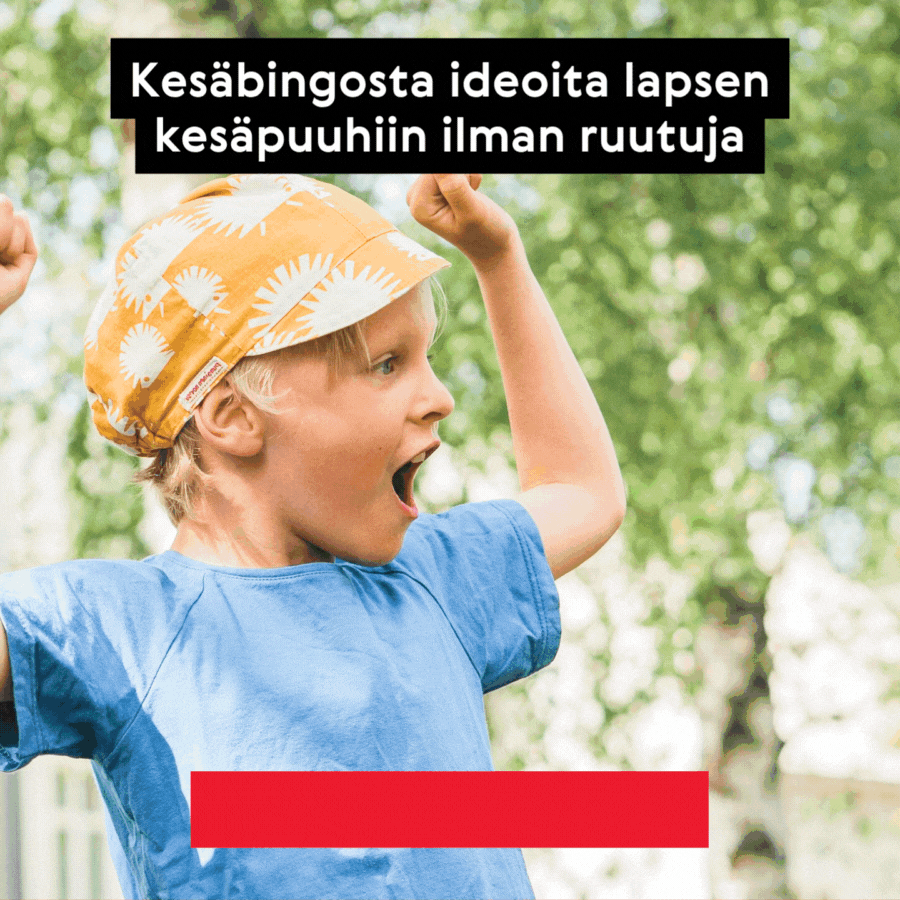Emotional skills in our family
Taking a moment to quieten down is good for you in the midst of everyday hustle and bustle.
Emotional skills in our family
Small children can experience many feelings. They may be frightened about going to day care and feel shy in the company of strangers. A little girl’s big brother is really good at ice hockey, but her younger sister always ruins everything they are playing. She feels irritated when her mum says we have to leave the park even though she wants to continue on the slide. At night, everyone gets a hug and a goodnight kiss. Recognizing and processing these feelings and many more teaches children mental health skills that will be useful every day of their lives. Verbalising various emotional states to children is important. It helps them recognize feelings and gradually to control them.
All feelings are allowed
When you’re feeling bad, irritated or sad, accepting and expressing these feelings are important skills. Parents should not be afraid of children’s negative emotions. In a bout of bad temper, children need support from adults in order to feel safe. In an accepting environment, they can feel they matter whether they are feeling good or bad. It’s important to discuss feelings and what is and isn’t allowed when the child is calm. Every time you tell children they are not allowed to do something, such as hitting others when they are angry, you should tell them what they are allowed to do in such a situation (for example, scream in the bathroom or rip up a newspaper). This way the children can express their feelings. Children want to feel that adults can handle their anger even when they don’t know what to do with it. Children’s tantrums can get furious, and it’s good if the parents have decided beforehand what to do in such situations. Adults should think about what is allowed in their family and how they should act. A child’s anger will evoke feelings and reactions in adults. It’s not a good idea to try to teach the child when you’re upset. Teaching and processing will take place after everyone has calmed down. Learning to control your behaviour is a process that lasts your entire life, and adults can set examples for children here too. When you get upset, afterwards you should set an example by apologizing and naming your feelings.
Help the child to recognize emotions
Adults are needed to give names to feelings and to explain their causes and consequences. By talking about feelings, children learn words to describe their own emotional states. Learning to consider the feelings of others develops social skills and empathy.
- Help your children to notice different emotional states, for example when reading. Think about how the characters feel and how their feelings make them act. What’s a frog like when in love? Why is the hedgehog in the nursery rhyme sad?
- Remember to talk about your own feelings out loud. Explain to your children why you’re worried or happy about something.
- Similarly, you should also talk about your perception of the child’s feelings: “I notice you’re really keen on this jigsaw puzzle.” However, the child should learn from the beginning that they are the only one who can experience their feelings.
- When there’s been a conflict, talk about what happened. How did everyone feel at each point? What went wrong and what did we learn for the future?
Relaxation exercises form a break in a busy life
It’s difficult to enjoy life if your body and mind are tense. Your thoughts wander, you feel restless and it’s difficult to concentrate. Remember the hassle and the endless flow of stimuli are also present in children’s lives. Taking a moment to quieten down is a good habit to acquire in the midst of everyday hustle and bustle. Simple relaxation and mindfulness exercises are good for children. They can help children to concentrate, overcome nervousness and scary moments and help them fall asleep. Learning to consciously relax can also promote the development of emotional skills.
- An easy way to learn to relax is by recognizing the difference between tension and relaxation. You can try consciously tensing and relaxing your whole body. Images are helpful to children; for example, you can ask the child to become first a rigid robot and then running sand. Teach the child to listen to bodily sensations. Where can tension be felt? How does relaxation show in the body?
- Take a minute to calm down at meals before you eat. For example, everyone can take turns to talk about something that happened during the day.
- Doing everyday tasks mindfully is an exercise well suited for children. Try eating an apple or brushing teeth as slowly and mindfully as possible. Notice different senses one at a time.
- Rocking a favourite soft toy to sleep helps children focus on their breathing. Place the soft toy on the child’s tummy when they are lying on their back, and ask them to follow the toy rising and falling with their breathing.
- Calm the child down and help him or her fall asleep by stroking his or her entire body. First stroke the legs to sleep, then arms, tummy, chest and head. A familiar song or humming may also trigger relaxation.
